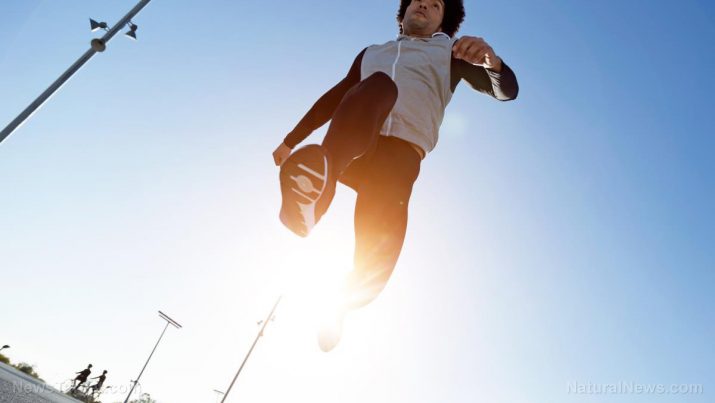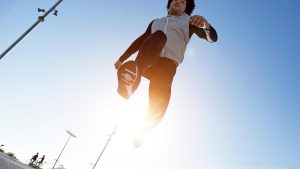
Shin splints – causes, side effects and treatments at NaturalPedia.com
Wednesday, June 20, 2018 by Ralph Flores
http://www.naturalpedia.com/shin-splints-causes-side-effects-and-treatments-at-naturalpedia-com.html

Shin splints, also referred to as the medial tibial stress syndrome, is a condition where the muscles, tendons, and bone tissue around the tibia are inflamed. This usually causes pain along the inner border of the bone, especially in the areas where the muscles are attached.
The most common cause of shin splints is exercise, where the condition usually develops after starting a fitness program. While it is often associated with running, any vigorous physical activity can cause shin splints.
To relieve and prevent shin splints, taking care not to exert too much effort during exercise, as well as rest and stretching, are essential.

Known risk factors and symptoms of shin splints
Shin splints occur when the muscle and the bone tissue in the leg are strained, usually because of a repetitive motion such as running. It can also develop after sudden changes in physical activity, such as increasing the frequency and duration of exercise. Running long distances can also result in shin splints.
Other factors, such as having flat feet or abnormally rigid arches or exercising with footwear that does not provide support are also causes of shin splints. For the most part, dancers and those in the military recruits are often diagnosed with the condition.
Common symptoms include:
- Tenderness, soreness or pain along the inner side of the shinbone
- Mild swelling in the lower leg
The pain may disappear after a person stops exercising; however, it may recur and even lead to a stress reaction or a fracture.
Body systems affected by shin splints
The following are possible complications of shin splints:
- Inflammation and arthritis of surrounding joints, usually a result of changing posture
- Strain in the back because of abnormal gait
- Stress in the foot muscles and tendons
- Disability, in severe cases
However, pain in the lower legs and shins could also be a sign of:
- Stress fracture – defined as tiny cracks in the bone, these types of fractures are localized and often affect one leg
- A sprain or strain – aside from pain, swelling and bruising is seen in the area
- A tendon injury – a grating or crackling sensation is felt when moving the affected area
- Peripheral arterial disease – the condition, which reduces blood supply to the legs, causes an aching pain which dissipates after a few minutes of rest
- Compartment syndrome – this causes muscles cramps during exercise which fades quickly during rest
Food items or nutrients that may prevent shin splints
To manage shin splints, there are many nutritional supplements available. Some of these include omega-3 fatty acids, vitamin B complex, vitamin C, grape seed extract, proteolytic enzymes, garlic, Boswellia, and cat’s claw. Boswellia, in particular, produces a gum that has been used to treat muscle pain, as well as fibromyalgia, arthritis, gout, and lower back pain.
Treatment and management options for shin splints
If a person experiences shin splints, he should first stop running completely, then apply ice to the affected area to reduce inflammation.
Other suggested treatments to manage or even prevent the condition include the following.
- Stretching. There are a lot of ways to stretch to prevent shin splints. These include:
- Kneeling on a carpeted floor – with legs and feet together and toes pointed back – and slowly sitting onto your calves and heels. Push the ankles into the floor until the muscles of the shin are tensed up.
- Sitting and tracing the alphabet using the toes using each leg.
- Alternately walking regularly and on the heels
- Wrapping. One way to manage shin splints during running is wrapping the leg before a run. Start just above the ankle and continue to just below the knee.
- Cross-training. Activities such as swimming, running and riding a bike are good ways to exercise while waiting on the shin to heal.
- Managing work-outs. Once a person is well enough to run after a shin splint, he should start slowly, increasing his mileage by no more than 10 percent in a week. Avoid hills and hard surfaces until the pain goes away completely, then re-introduce them gradually.
- Wearing proper gear. If necessary, a person with shin splints should get running shoes that fit his specific foot type. It is also good practice to have two pairs of shoes and wear them alternately to vary leg stress.
Where to learn more
- Benefits of stretching
- Stretch and Improve Your Health
- ‘Active Release Technique’ provides safe, effective healing for common injuries
- Plantar Fasciitis: What it is and how to get rid of it on your own
- Running from joint pain – Four critical steps necessary for improved performance and recovery
Summary
Shin splints refer to the inflammation of muscles, tendons, and bone tissue around the tibia.
The most common cause of shin splints is exercise.
Taking care not to exert too much effort during exercise, as well as rest and stretching, is essential to relieve and prevent shin splints.
Sources include:
Tagged Under: Tags: Shin splints





